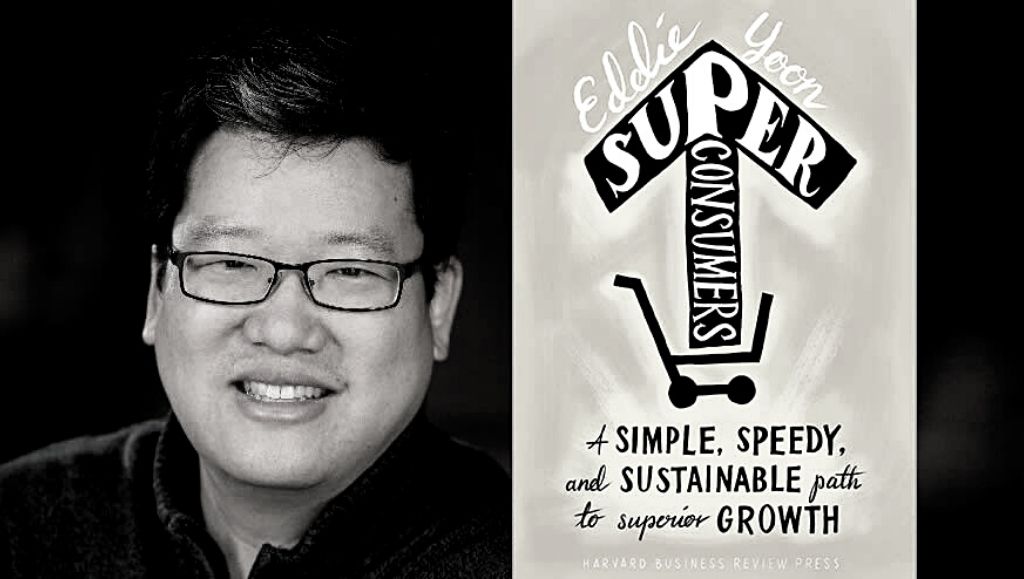The inverted pyramid is a principle borrowed from journalism for effective content writing. It helps readers gain the most important knowledge right under the headline.
It presents the most vital points that readers must know at the beginning of the article. It lets readers quickly skim through written content, absorb the elements that appeal to them, and decide to continue reading the article or not.
What is the inverted pyramid approach?
The inverted pyramid of content writing is used by journalists to write content and present the key takeaways in an article upfront to the readers. The idea here is that people do not have a lot of time in their hands, so present the most valuable information right when they come across a story. It is based not on ideas or notions that a journalist has, rather brings out the bare facts that a reader must know.
Let us understand it a little better.
Making people wait and search all the way to the bottom of the news article can cause them to switch their attention. The inverted pyramid for content marketing satisfies their need for information and enhances recall value.
In many ways, this technique owes its origins to the military communications acronym called BLUF which stands for “Bottom Line Up Front.”
The beauty of this concept is that it has been around for many years. And, we have been exposed to it without being fundamentally aware of its existence.
Gleaning into the inverted presentation in journalism
For many of us, our day starts with a newspaper. (Despite the plethora of options available online, I prefer my morning coffee with a newspaper. Somehow, the day seems incomplete without the rustle of a newspaper in the quietest hours of the day.)
But, have you ever wondered what makes us read a news article? What makes us stick to a topic of news feed – be it economics, business, sports, entertainment, lifestyle, yoga, etc.?
There are four reasons for it:
- Our interest in the topic
- The headline of the news article
- The author’s authority in the topic
- The depth of information in the article
Of all the above reasons, I would attribute the maximum percentage to the last one – the information contained in the article. But the trick is to present the information in a manner that a reader can consume it easily.
Now, let us look at a news article to see if the above reasoning holds good. The below newspaper clipping is from the Chennai edition of the Times of India for 29th June 2020 written by a US-based journalist.
Notice the area highlighted in blue right below the headline and at the beginning of the article. This section is called the ‘Lede’ in a news story. It talks about the key facts – the number of cases of coronavirus infections and the deaths caused by it around the world and in the United States.
By the time a reader gets to the second paragraph, she is aware of the numbers and the havoc caused by the current pandemic. This section is called the ‘Nut Graf,’ which provides more context to the core of the story.
The journalist then moves on to name the intensity of the pandemic in a few states, their Republican or Democratic allegiance, and even has a couple of mentions about the President of the United States.
The journalist knows his art well and is aware that readers want to know about numbers of coronavirus instances more than anything else. So, he has given more importance to it right at the beginning of his article and moved the not-so-important sections to the bottom of the article.
Does this hold for other genres such as business? Let us look at another example. This time, I examined the news about a possible merger scoop that Times of India picked up on 30th June 2020.
The news was about one of India’s largest conglomerate Reliance Industries Limited (RIL) looking to acquire an apparel company called Future Group. The Lede section of this news item highlights the biggest takeaway, i.e., with this deal, RIL will further solidify its position as India’s largest physical store player in groceries, fashion, and general merchandise.
The Nut Graf provides more context in the second paragraph and explains about the companies in Future Group that are likely to be a part of this deal.
Journalists have a lot to teach marketers and sales reps
Journalists are known for bringing their succinctness to their content writing. They face numerous challenges while publishing their news articles that include competing for space in a crowded newspaper, the editor’s choice (not to forget his grumpiness at having to edit large news collections), the importance of their scoops, and an ever-shrinking attention span for the reader
Amidst these challenges, if a journalist must make sense to a reader through her writing, she will have to be at the top of her game. The inverted pyramid approach has been a tried and tested method of content writing for many years now and journalists across the world use it to write effective copy.
So, the news article that you read has a lot to teach us because the methods used to design the right structure have been researched and refined for many years now. Surely, marketers and sales reps can borrow a leaf from the work of their journalist friends and bring that into their content writing.
How does the pyramid help marketers in content writing?
No matter what profession you do for a living, communication is the essence of life. And the world’s greatest leaders can communicate succinctly and effectively – either through the spoken word or through written communication such as emails, blogs, social media posts, etc.
Marketers have the unenviable challenge of writing persuasive copy for all kinds of audiences that ultimately takes the reader a step to closer to conversion. Persuasion is one of the toughest aspects of content writing, especially given the current attention span of the readers.
So, how can marketers communicate effectively especially when they are putting together written content?
The answer lies in putting up information right at the top.
Let us look at a blog recently written by Joshua Hardwick, head of content at Ahrefs.com. Here is a snip of the blog.
Notice anything familiar? Joshua has adopted the same approach of the inverted pyramid that we have seen above. The blog is about building local citations for businesses that are dependent on revenues from their neighbourhoods. The author helps readers understand what ‘Local Citations’ mean before he uses an image to further explain it.
The target audience for this blog are probably owners of small businesses whose area of influence is limited to their localities, regions, and communities. Chances are high that they do not know what a Local Citation means and how they could benefit from it.
So, instead of dumping all his knowledge in one go, Joshua has a methodical approach to it – start with the definition, use an example, and then go with detailed explanations.
How does it apply to sales reps?
Sales reps, like journalists, have the unenviable job of getting their customers and prospects read their emails. So, there is the arduous task of writing an email subject line that must stand out from the tons of mails that customers receive every day. Once they cross this obstacle, the next content writing challenge for the sales rep is writing an email copy that nudges the customer to take an action.
This is where it can get tricky. And this is where sales reps can use the inverted pyramid approach for content writing to great effect. Here is an example of an email that a sales rep might write to a customer:
| Hi Michelle, I’m reaching out to know if you’d have 30 minutes next week to jump on a call to go over the proposal that I sent you last Monday. The idea is to help you understand the different benefits and visualize the possible outcomes that you are likely to experience from our solution. I have ensured that we look into all the use cases that you mentioned during our call last week (thank you very much for that!) and I have run it past the product team at my end. They have assured me that our final solution will take into account all use cases. They have been heads down working on a proof-of-concept as I write this mail to you. Feel free to pick a time slot from the below options and I will send you the meeting invite. Tuesday: 11am – 3pm Wednesday: 11am – 2pm and 3pm – 5pm Thursday: 1pm – 5 pm Friday: 11am – 2 pm Look forward to speaking with you. Cheers, Andy |
If you noticed the introduction of the above email, the most important element is that Andy is seeking Michelle’s time next week for 30 minutes. He does not waste any time getting to the point straight or wander around with verbose text.
He also explains the reason why he is seeking a 30-minute appointment, which is to nudge Michelle take a step closer to accepting the sales proposal and walk her through the document. This helps in answering any questions she might have. Towards the end of the mail, he has given Michelle enough options to choose a timeslot.
Here is another example. This time, the mail is for a customer who is ready to sign up but needs an incentive to get onboard.
| Hi David, I’m glad to inform you that based on your request, our services are now available to you at $50 per user instead of $75. We will also be extending our customer support hours from 8:30 am (EST) instead of 10:00 am. I have copied our project manager Mark Woodruff, who will be your account manager throughout this engagement. Mark has a reputation for delivering projects on time and is a favorite among quite a few of our customers. I will send you a copy of the revised contract tomorrow for your records. Do let me or Mark know if you have any other concerns and we’ll be happy to help. Cheers, Jonathan |
In the above example, David has two primary concerns – i.e., price reduction and extension of support hours. This is paramount for David and the progress of their business relationship hinges on this. Jonathan knows it and has addressed them right at the top of the email.
Then, he moves seamlessly to other aspects such as the appointment of a project manager and copy of the contract, etc.
Mail communication is a passive form, but it is in our hands to make it a personal/one-to-one communication. Every time a sales rep mails a customer, the ‘ask’ must come through clearly and his motive should be visible to the customer.
Where do we tend to go wrong?
As marketers and sales reps, we tend to make mistakes in our external communication. Here are a few things that we must be careful about:
Hide information within the paragraph
Instead of placing the most vital information on top of the mail, we hide it in between a few sentences or within a paragraph. This hinders the reader’s experience. As a thumb rule, never let a reader or a customer search for information within the copy. By doing this, you will be removing friction points and making it worth the reader’s time.
Be clear in your communication
If you can convey the important pieces upfront in the first paragraph clearly, you have done your job. Do not risk breaking it into smaller chunks and giving away some portions of it in the copy of the document. That way, you will end up confusing the reader. Instead, take the time to write a clear and concise message in your copy at the top. Read it twice before you launch it because – to err is human; to edit, divine.
Bring out the facts
If you have some facts to convey such as numbers, data, etc., then you must bring them upfront instead of placing it deeper. This ensures that readers can retain it for a longer duration.
The corporate branding sins
Often, corporate brands make the mistake of communicating what they consider supremely important instead of putting out customer-focussed content. For them, the triangle is upright, and the most important section of the message might be buried somewhere deep within the copy.
This leads to quicker disengagement by their audiences and a lesser ROI for their content writing/ content marketing efforts. Brands and corporates have a responsibility to communicate effectively to their audiences and adopting the inverted pyramid of content writing helps them achieve that.
Bias in assumptions
We tend to assume that readers are already aware of what we have to say in our communication. For example, acronyms have no place in the opening paragraph unless you are sure that the reader already knows about it. At other times, it may be facts or data points that are crucial for decision making. So, ensuring that they are clearly mentioned in the top of the content helps readers retain it longer.
Before you go…
In the inverted pyramid format, the first paragraph is a giveaway – it reveals everything that is important to a reader. This also means that the reader gets all the vital information even if she decides not to continue reading the content piece anymore.
This form of content writing has multiple benefits, such as:
- Readers can decide whether to continue reading or not.
- When readers read an article that matches their expectations, they tend to spend a longer duration on it, thereby boosting its value.
- The Lede section of a content piece can have keywords embedded into it to enhance SEO (Search Engine Optimization).
So, the next time you sit down to write a content piece, try the inverted pyramid experiment and observe the results.



Excited to read about this topic (found it from Zest.is) one day after I also used insights from the inverted triangle to write a content writing formula SaaS brands can leverage to convert readers directly into new users (no MQLs).
I call the I developed Product-Led Storytelling and it has 9 steps, which breaks down into three areas to attract, engage, and convert readers into trial users (or prompt them to request for a demo).
I’ll leave a link to it in the URL tab of this comment form (do check it out and lemme know what you think).
[…] keywords are taken from the title, subheadings, alt text, meta descriptions, and the body of the content itself. Podcasts are inherently different, as they typically contain much less text than a normal […]
Nicely put Kartik. The inverted pyramid is undoubtedly the best way forward given our limited attention spans. Personally, I feel this pushes creativity against the wall.